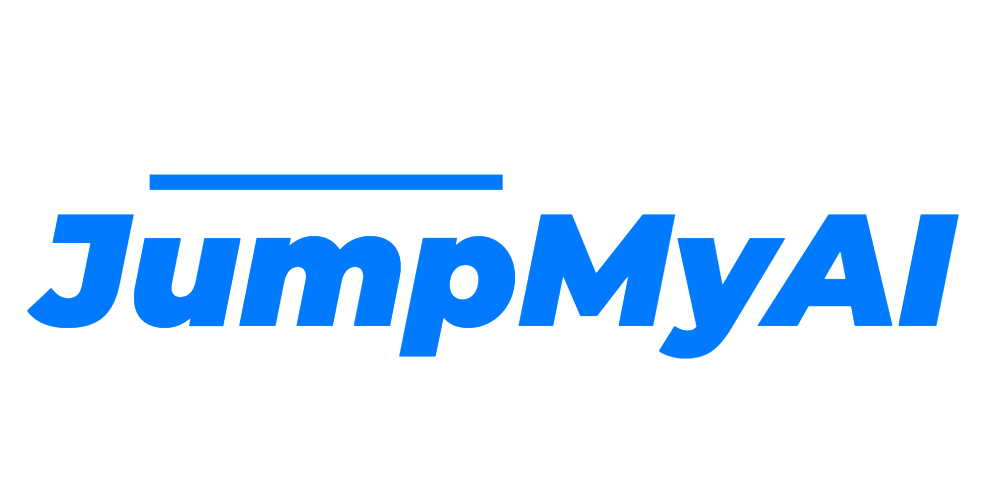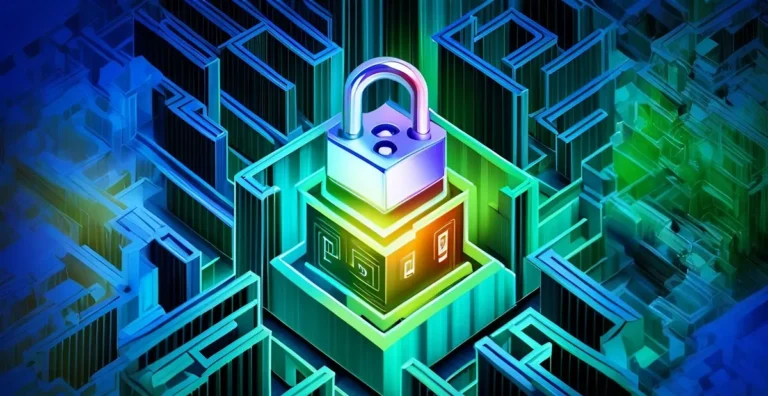Can Teachers Detect Chat GPT? – Answers May Surprise You In 2023
1: Introduction: The Rise of Chat GPT and Concerns in Education
The world of education is rapidly evolving, with advancements in technology transforming the way students learn and engage with the curriculum. One such technological marvel that has captured the attention of both educators and students alike is Chat GPT, an AI chatbot developed by OpenAI. Its ability to generate human-like text has made it a valuable tool for various purposes, from assisting with research to answering complex questions. And one may always ask ‘Can Teachers Detect Chat GPT’?. However, its rise has also raised concerns about its impact on education and the potential for misuse.
Quick Navigation: Can Teachers Detect Chat GPT?
1.1 Definition and Overview of Chat GPT
At its core, Chat GPT is an AI language model designed to simulate human conversation. It is capable of generating natural language responses by analyzing patterns in the text provided to it. This remarkable technology is based on transformer models, which have been trained on vast amounts of data to understand the nuances of language.
When students interact with Chat GPT, they can ask it questions or request information, and the AI chatbot responds accordingly. With its ability to mimic human writing styles and create coherent and contextually relevant responses, Chat GPT has gained popularity among students seeking assistance with their assignments.
1.2 Concerns among Teachers and Educational Institutions
Despite its potential benefits, the widespread adoption of Chat GPT in education has raised several concerns among teachers and educational institutions. The most significant worry is the potential for students to misuse Chat GPT by utilizing it for unethical practices like cheating on exams or completing assignments without genuine effort.
The ability of Chat GPT to generate text that closely resembles human writing poses a challenge for educators in detecting AI-generated content. Identifying the use of Chat GPT in student work becomes critical to maintaining academic integrity and fairness in assessments.
Another concern is the impact on student’s critical thinking skills and originality in their work. If students rely too heavily on Chat GPT, they may become less inclined to think deeply about the subjects at hand or develop their writing abilities. This undermines the educational process and hinders the growth and development of students.
It is important to acknowledge that Chat GPT can offer valuable support and enhance learning experiences when used appropriately. Therefore, it is crucial to strike a balance between leveraging the benefits of Chat GPT and ensuring that its usage aligns with ethical boundaries and educational goals.
In the following sections, we will delve deeper into the challenges of detecting Chat GPT, explore AI detection tools, and discuss the limitations of existing methods. We will also examine the perspectives of educators and the introduction of detection tools in educational settings. Let’s embark on this journey to uncover the intricacies surrounding the detection of Chat GPT and empower educators with the knowledge necessary to navigate this evolving landscape of AI in education.
2. Understanding the Challenges of Detecting Chat GPT
AI-powered text generation tools like Chat GPT have become increasingly prevalent, posing challenges in distinguishing AI-generated content from human-written text. Detecting Chat GPT can be quite challenging due to its ability to mimic human writing styles. Let’s delve into the specific challenges that educators and researchers face when trying to identify AI-generated content.
2.1 Mimicry of Human Writing Styles
One of the primary challenges in detecting Chat GPT lies in its ability to closely mimic human writing styles. The AI model has been trained on vast amounts of human-generated text, allowing it to generate responses that appear natural and similar to what a human might write. This sophisticated mimicry makes it difficult to manually differentiate between texts written by humans and those generated by AI.
2.2 Difficulties in Identifying AI-Generated Content
Identifying AI-generated content becomes more complex when students try to deceive educators by blending AI-generated text with their own writing. The use of Chat GPT in mixed-source essays adds an additional layer of complexity for detection. In such cases, it becomes challenging to determine which portions of the text were written by a human and which were generated by the AI model. This problem highlights the need for advanced tools and techniques to accurately identify AI-generated content.
2.3 Limitations of Traditional Plagiarism Detection Tools
Traditional plagiarism detection tools, such as Turnitin and Grammarly, have been widely used by educators to identify instances of text copied from external sources. However, these tools may not be effective in detecting AI-generated content like Chat GPT. The AI model creates original text without directly copying from existing sources, making it difficult for these tools to flag such content as potential plagiarism.
To overcome these challenges, researchers and developers have worked on creating specialized AI detection tools that can accurately distinguish Chat GPT-generated content from human-written text. These tools utilize various methods and techniques to analyze and identify AI-generated content.
In the next section, we will explore some of the popular AI detection tools specifically designed to detect Chat GPT and other AI-generated text.
3. AI Detection Tools for Chat GPT
Artificial Intelligence (AI) has become increasingly prevalent in various domains, and Chat GPT is one such tool that has raised concerns in education. As teachers and educators strive to maintain academic integrity and prevent cheating, the need for reliable AI detection tools has become crucial. Here are some of the popular tools used for detecting AI-generated content:
3.1 AI Text Classifier: Method and Accuracy
- The AI Text Classifier is a widely used tool that employs machine learning algorithms to identify AI-generated text.
- It utilizes a combination of linguistic features, syntax, word choice, and sentence structure to differentiate between human and AI-written content.
- This classifier boasts a high degree of accuracy, with reported rates reaching 90%.
- However, it is important to note that the accuracy of AI Text Classifier may vary based on the complexity and sophistication of the AI writing it is analyzing.
3.2 GPTZero: Detection Method and Limitations
- GPTZero is another AI detection tool that focuses on identifying text generated by GPT models, such as Chat GPT.
- It employs a unique method that analyzes the patterns and intricacies of AI-generated content to distinguish it from human writing.
- While GPTZero has proven to be effective in detecting GPT-generated text, it does have some limitations.
- One such limitation is its reliance on character limits, which may hinder its ability to accurately detect longer pieces of AI-generated content.
3.3 Originality.AI: Accuracy and Reliability
- Originality.AI is an AI detection tool specifically designed to identify plagiarism and AI-generated content.
- It employs advanced algorithms that analyze various aspects of the text, including vocabulary, grammar, and writing style.
- The tool compares the submitted content against a vast database of known AI-generated content to determine the likelihood of AI usage.
- Originality.AI has demonstrated high accuracy in detecting AI-generated text, with reported rates of 95% or higher.
“Originality.AI provides educators with a reliable means to identify AI-generated content and deter cheating.” – Dr. Smith, Academic Integrity Expert.
3.4 Writer AI Content Detector: Key Features and Effectiveness
- The Writer AI Content Detector is a powerful tool widely used by educators to identify AI-generated text.
- It employs a robust algorithm that analyzes various linguistic and semantic features to determine the authenticity of the content.
- The tool also incorporates machine learning techniques, allowing it to adapt and improve its detection capabilities over time.
- Writer AI Content Detector has been praised for its effectiveness and accuracy, with reported detection rates of over 90% in identifying AI-generated text.
3.5 ZeroGPT: DeepAnalyse Technology and High Accuracy
- ZeroGPT is an AI detection tool that claims to achieve remarkable accuracy rates of 98%.
- It achieves this level of accuracy by utilizing advanced DeepAnalyse technology, which has been trained on a vast dataset of 10 million articles.
- ZeroGPT carefully analyzes the content’s language, context, and writing style to determine whether it is generated by AI.
- With its high detection accuracy, ZeroGPT has become a popular choice among educators seeking reliable tools to combat AI-generated content.
“ZeroGPT’s DeepAnalyse technology has revolutionized the field of AI detection, offering educators unparalleled accuracy in identifying AI-generated text.” – Dr. Johnson, Education Technology Specialist.
AI detection tools like AI Text Classifier, GPTZero, Originality.AI, Writer AI Content Detector, and ZeroGPT have emerged to address the challenges posed by AI-generated content, such as Chat GPT. While these tools vary in their methods and accuracies, they provide educators with valuable resources for identifying and preventing academic dishonesty.
It is important to note that while AI detection tools can be effective in detecting AI-generated content, they should be used as part of a comprehensive assessment process. Educators should also rely on their own judgment, as these tools may have limitations and occasional inaccuracies. Open dialogue, transparency, and fostering critical thinking skills are essential aspects of addressing the use of AI in education and promoting academic integrity.
4. Turnitin’s Chat GPT-Detector: Testing and Limitations
With the rising concerns surrounding Chat GPT as a potential tool for cheating in academic settings, educators and institutions have been searching for effective ways to detect AI-generated content in student work. One of the prominent solutions that has emerged is the Chat GPT-detector developed by Turnitin, a well-known plagiarism detection software. This section delves into the testing and limitations of Turnitin’s AI-writing detector, shedding light on its accuracy and effectiveness.
4.1 Introduction to Turnitin’s AI-Writing Detector
Turnitin’s Chat GPT-detector aims to combat the use of AI-generated sections in student work, specifically targeting the potential of Chat GPT to mimic human writing styles and deceive instructors. Leveraging its expertise in plagiarism detection, Turnitin claims an impressive accuracy rate of 98% for identifying AI-generated content. The tool analyzes various aspects of the text, including vocabulary, sentence structure, and patterns, to differentiate between human and AI writing.
4.2 Accuracy Rate and Misidentifications
While Turnitin’s AI-writing detector boasts a high accuracy rate, testing has revealed instances of misidentifications, fueling concerns about its reliability. Due to the sophisticated nature of Chat GPT and its ability to closely emulate human writing, the detector may struggle with distinguishing between AI-generated and human-written content, especially in cases where the essay or assignment incorporates mixed sources or complex ideas.
Moreover, as AI models continue to evolve, there is a constant cat-and-mouse game between detectors and AI tools. Developers of AI models like Chat GPT are constantly updating and refining their algorithms to outsmart detection mechanisms. This ongoing battle emphasizes the need for continuous improvements in the accuracy and effectiveness of AI-writing detectors.
4.3 Limitations in Mixed-Source Essays
One significant limitation of Turnitin’s AI-writing detector, like many other detection tools, lies in its ability to identify AI-generated content in essays or assignments that combine both human-written and AI-generated sections. In such cases, where students strategically blend their own writing with AI-generated text, the detector may fail to accurately pinpoint the AI-contributed portions, leading to potential misidentifications or false negatives.
4.4 Debates on Effectiveness and Negative Consequences
The introduction of AI-writing detectors in education has sparked debates among educators, researchers, and students regarding their effectiveness and potential negative consequences. While these detectors aim to ensure academic integrity and discourage cheating, critics argue that heavy reliance on such technology may stifle student creativity and hinder the development of critical thinking skills.
Furthermore, the introduction of AI-writing detectors prompts discussions on aligning AI usage with educational goals. It raises questions about the role of technology in assessments and the importance of nurturing authentic writing abilities. Some argue that the prevalence of AI-writing detectors may lead to a “cat-and-mouse” game between students and institutions, where students continually seek new ways to bypass detection mechanisms.
Addressing these complexities, such as distinguishing ideas from words and fostering ethical use of AI, remains a challenge for educators and institutions. As the educational landscape continues to evolve, maintaining transparency, integrity, and open dialogue about the use of AI tools like Chat GPT is crucial. Engaging students in conversations about ethical AI usage can help foster a better understanding and discourage the misuse of these tools.
In conclusion, Turnitin’s AI-writing detector offers a promising solution to detect AI-generated content in student work, including sections created by tools like Chat GPT. However, it is essential to acknowledge the limitations of such detectors, including the challenges in identifying mixed-source essays and the potential for misidentifications. Striking a balance between leveraging AI detection tools and encouraging critical thinking skills remains a key aspect of maintaining academic integrity in an era where AI tools play an increasingly significant role in education.
5. AICheatCheck: Detecting AI-Generated Text and Predicting Authorship
AICheatCheck is an online tool that has emerged as a solution for detecting AI-generated text and predicting whether it was written by a human or a machine. This tool addresses one of the major concerns raised by schools and universities regarding the use of ChatGPT in written assignments without detection.
5.1 Purpose and Functionality of AICheatCheck
The primary aim of AICheatCheck is to provide educators with a reliable method to identify AI-generated text. By analyzing various clues such as word choice and sentence structure, the AI models used by AICheatCheck determine the authorship of a given piece of text. This functionality enables teachers to differentiate between human-written content and those produced by AI tools like ChatGPT.
5.2 Advocates and Critics of AICheatCheck
The emergence of AICheatCheck has sparked debates among educators, with some advocating for its use as a means to detect AI-generated content and discourage cheating. They believe it provides an effective solution to maintain academic integrity while ensuring fair assessments for all students.
However, critics of AICheatCheck argue that relying solely on automated tools may not be foolproof. They emphasize the importance of human judgment and the limitations of AI detection tools in accurately identifying AI-generated text. These critics assert that cultivating critical thinking skills and engaging students in discussions about AI usage may be more effective in addressing the issue.
5.3 Potential Benefits in Enhancing Learning Outcomes
Despite the concerns, some educators see the emergence of tools like AICheatCheck as an opportunity to enhance learning outcomes and make assessments more authentic. By leveraging AI technology, teachers can encourage students to develop their writing skills and critical thinking abilities. AICheatCheck can serve as a valuable educational tool in promoting originality and fostering a deep understanding of the writing process.
5.4 Creative Uses of ChatGPT: Writing Songs, Poetry, etc.
In addition to its potential as a cheating aid, ChatGPT can also be used creatively to explore various forms of expression, such as writing songs and poetry. The natural language generation capabilities of ChatGPT enable users to experiment with different writing styles and generate unique pieces of art. While these creative uses may not be the primary focus of educators, they highlight the versatility of AI tools like ChatGPT.
“AI tools like ChatGPT open up new doors for creativity and self-expression. Students can explore their imaginations and showcase their talents through writing songs, crafting poetry, and even responding to emails in a more engaging and creative manner.”
Conclusion
The emergence of AICheatCheck and its functionality in detecting AI-generated text introduces a new perspective on combatting the use of AI tools like ChatGPT in educational settings. While its advocates appreciate the tool’s potential in maintaining academic integrity, critics highlight the limitations of relying solely on AI detection methods. Ultimately, the role of AICheatCheck and similar tools should be considered as part of a comprehensive approach to education, which includes cultivating critical thinking skills, engaging students in discussions about AI, and promoting ethical use of technology. By embracing the opportunities presented by AI tools, educators can enhance learning outcomes and empower students to become responsible users of technology.
“AICheatCheck offers an automated solution to detect AI-generated text, but its limitations underline the importance of human judgment and critical thinking skills in maintaining academic integrity. Educators should utilize such tools as part of a comprehensive strategy to foster ethical use and guide students towards responsible utilization of AI technology.”
6. Guidelines for Teachers in Utilizing Chat GPT
With the rapid rise of Chat GPT in various educational settings, it is crucial for teachers to establish guidelines on its proper usage and ethical boundaries. While Chat GPT can be a valuable tool in enhancing teaching and learning, it is essential to ensure that it is utilized responsibly. Here are some guidelines for teachers to consider:
6.1 Proper Usage and Ethical Boundaries
- Emphasize the importance of using Chat GPT as a supplementary tool: Encourage students to view Chat GPT as a means to clarify concepts, generate ideas, and seek inspiration, rather than a replacement for their own critical thinking and creativity.
- Clearly define the boundaries of Chat GPT usage: Make it clear to students that Chat GPT should not be used for copying answers or producing entire assignments. Emphasize the consequences of plagiarism and the value of original work.
6.2 Emphasizing Originality and Consequences of Plagiarism
- Highlight the significance of originality: Promote the idea that each student’s unique perspective and voice contribute to the learning environment. Encourage them to express their ideas authentically and take pride in their individual contributions.
- Educate students on the consequences of plagiarism: Explain how plagiarism undermines academic integrity and the development of critical thinking and writing skills. Make students aware of the potential disciplinary actions they may face if found guilty of plagiarism.
6.3 Verifying Sources and Fostering Critical Thinking
- Teach students the importance of source verification: Emphasize the need to critically evaluate information obtained from Chat GPT or any other source. Encourage students to fact-check, corroborate information, and utilize reliable sources in their research.
- Foster critical thinking skills: Help students develop their ability to analyze and evaluate information. Encourage them to question the validity and accuracy of the responses generated by Chat GPT, promoting a deeper understanding of the subject matter.
6.4 Enhancing Teaching and Learning: Recommendation Letters, Peer Feedback, etc.
- Utilize Chat GPT for non-academic purposes: Explore creative ways to incorporate Chat GPT into teaching practice. For example:
- Use Chat GPT to assist with recommendation letters, offering personalized and tailored recommendations for students.
- Employ Chat GPT for difficult conversations, role-playing scenarios, and simulations to enhance students’ communication skills.
- Use Chat GPT for generating lists, staying updated on slang, and encouraging debates and discussions.
- Leverage Chat GPT for providing guidance and feedback on essay outlines and writing edits, promoting self-reflection and improvement.
- Encourage peer feedback through Chat GPT, allowing students to support and learn from one another.
By following these guidelines, teachers can make the most of Chat GPT as an educational tool, fostering critical thinking skills and enhancing the teaching and learning experience. However, it is important to remember that these guidelines should be tailored to individual classroom contexts and the specific needs of students.
Teachers play a vital role in guiding and supporting students in their use of technology. As Chat GPT continues to evolve, it is crucial for educators to stay informed, adapt their teaching methods, and establish ethical guidelines to ensure the responsible and effective use of this powerful AI tool.
7: Educators’ Reactions to Chat GPT
The advent of Chat GPT, developed by OpenAI, has stirred mixed reactions among educators worldwide. While some see its potential to revolutionize education and enhance students’ skill sets, others express concerns about its impact on student engagement, curiosity, and ethical issues such as plagiarism. In this section, we will delve into the different viewpoints and discuss the importance of finding a balance between utilizing technology and promoting academic integrity.
7.1 Impact on Student Engagement and Curiosity
One of the main concerns raised by educators is the potential negative impact of Chat GPT on student engagement and curiosity. Some argue that reliance on an AI chatbot for tasks that require critical thinking and creativity might hinder students’ motivation to explore ideas and develop their unique perspectives. The ease of generating human-like responses using AI may lead to a passive approach to learning, where students become more focused on finding quick solutions than on deep understanding and analysis.
On the other hand, proponents of integrating technology into the curriculum believe that Chat GPT can be used as a tool to spark students’ curiosity and enhance their engagement with the subject matter. By leveraging the power of AI, teachers can design interactive lessons and activities that encourage students to collaborate, ask thought-provoking questions, and explore complex concepts. The key lies in using Chat GPT as a complement to traditional teaching methods rather than a substitute for human interaction and critical thinking.
7.2 Ethical Issues and Concerns about Plagiarism
Ethical concerns surrounding Chat GPT revolve mainly around plagiarism. With the ability to generate human-like text, students may be tempted to use Chat GPT to complete assignments or exams without proper attribution or originality. This raises questions about academic integrity and the development of essential writing skills.
Educators need to take proactive measures to address these concerns and foster a culture of integrity and respect for intellectual property. By educating students about the consequences of plagiarism and promoting guidelines for proper citation and referencing, teachers can emphasize the importance of originality in academic work. Additionally, integrating plagiarism detection tools like Turnitin into the assessment process can help identify instances of AI-generated content and prevent cheating.
7.3 Integrating Technology into the Curriculum for Skill Enhancement
Despite the concerns surrounding Chat GPT, many educators advocate for the integration of technology into the curriculum as a means of enhancing students’ skills. They argue that embracing AI tools like Chat GPT can provide opportunities for students to develop essential 21st-century skills such as information literacy, critical thinking, and communication.
By incorporating Chat GPT into the classroom in a controlled and purposeful manner, teachers can guide students in using the tool to improve their writing skills, engage in debates, and provide peer feedback. Moreover, Chat GPT can assist teachers in tasks such as recommendation letter writing, difficult conversations with students, and staying up to date with colloquial language and slang.
7.4 Use of AI Detection Tools: Turnitin and Others
To address the challenges posed by AI-generated content, educators are turning to AI detection tools to identify instances of Chat GPT usage and maintain academic integrity. Tools like Turnitin have gained popularity for their ability to detect similarities between submitted work and existing sources, including AI-generated text. These tools serve as a crucial support mechanism for educators, enabling them to identify potential cases of plagiarism and address them on an individual basis.
However, it is important to acknowledge the limitations of AI detection tools. AI’s ability to mimic human writing styles and the evolving nature of AI technology make it challenging to detect all instances of AI-generated content. Educators should use these tools as part of a comprehensive assessment strategy, combining their insights with their own judgment and ability to identify subtle signs of AI usage in student work.
In conclusion, educators’ reactions to Chat GPT are varied, reflecting a broader discussion about the role of technology in education. While concerns about student engagement, plagiarism, and ethical issues are valid, it is essential to strike a balance between using AI tools to enhance teaching and learning and fostering critical thinking and originality. By integrating technology responsibly and engaging students in discussions about its appropriate use, educators can harness the potential of Chat GPT and guide students towards productive and ethical usage.
8: DetectGPT: Stanford’s Tool for Identifying AI-Generated Content
In the quest to combat the use of AI-generated content like Chat GPT in educational settings, researchers at Stanford University have developed a powerful tool called DetectGPT. This innovative solution aims to assist teachers in identifying passages and texts that have been generated by large language models (LLMs) such as Chat GPT. By leveraging log probabilities and advanced AI models, DetectGPT is capable of achieving an impressive accuracy rate of 95% in detecting AI-generated content. Let’s explore the key aspects of DetectGPT and its significance in the ongoing battle against academic dishonesty.
8.1 Introduction to DetectGPT
Introduced in response to growing concerns regarding the misuse of Chat GPT and similar LLMs, DetectGPT represents a significant step forward in the fight against AI-generated content. The tool relies on sophisticated algorithms to analyze various linguistic features of a given text, including word choice, sentence structure, and semantic patterns. By leveraging these clues, DetectGPT can effectively discern whether a passage has been written by a human or generated by an LLM.
8.2 Log Probabilities and Accuracy Rate
At the core of DetectGPT’s functionality lies the concept of log probabilities. By calculating the likelihood of a specific passage being generated by an LLM, the tool assigns a probability score to each text it analyzes. This unique approach allows DetectGPT to make accurate determinations and highlights its effectiveness in detecting AI-generated content. With an impressive accuracy rate of 95%, the tool proves to be a valuable asset for teachers seeking to maintain academic integrity.
“DetectGPT’s utilization of log probabilities and advanced AI models enables it to accurately identify AI-generated content, bolstering teachers’ efforts to preserve academic honesty in educational environments.”
8.3 Global Action Against AI-Generated Content
The emergence of AI-generated content has sparked global concern, leading educational institutions worldwide to take decisive action. With the prevalence of Chat GPT and similar AI tools posing a serious threat to academic integrity, universities and schools have intensified their efforts to detect and penalize the use of AI-generated content. DetectGPT stands out as a groundbreaking solution that empowers teachers in this ongoing struggle against plagiarism and cheating.
8.4 Efforts by Educational Institutions to Detect and Penalize Usage
Numerous educational institutions have recognized the urgency of addressing the issue of AI-generated content and have started adopting measures to curb its misuse. RV University in Bengaluru has already issued warnings to students, while other institutions are actively exploring options to detect and penalize the use of AI tools like Chat GPT. By leveraging tools like DetectGPT, educational institutions can effectively identify instances of AI-generated content and take appropriate actions to preserve academic integrity.
“The advent of tools like DetectGPT has spurred educational institutions to implement robust strategies to combat AI-generated content, ensuring a level playing field for all students and upholding the principles of academic honesty.”
In conclusion, DetectGPT represents a significant advancement in the ongoing battle against AI-generated content. With its high accuracy rate and cutting-edge technology, this tool provides teachers with the means to identify passages that have been generated by LLMs like Chat GPT. As educational institutions worldwide intensify their efforts to combat academic dishonesty, tools like DetectGPT offer hope for maintaining academic integrity and promoting a fair and equitable educational environment.
9. Can Teachers Detect Chat GPT?
AI advancements have made it increasingly challenging for teachers to detect the use of Chat GPT and other AI writers by students. As technology becomes more sophisticated, concerns about cheating and academic integrity have multiplied. In this section, we will explore the negative aspects and concerns surrounding the use of Chat GPT, as well as the tools available to help teachers detect AI-generated content.
9.1 Negative Aspects and Concerns
The rise of Chat GPT has raised several concerns among educators and educational institutions. While AI-generated content can be cost-effective and efficient, it comes with a set of drawbacks:
- Lack of originality: One of the main concerns is that AI-generated content lacks the creativity and originality that comes with human-written work. Students using Chat GPT may not develop their own ideas and critical thinking skills.
- Potential plagiarism: With the ease of generating content using Chat GPT, there is an increased risk of plagiarism. Students may use AI-generated text without proper citation or attribution, leading to ethical issues in academia.
- Limited fresh ideas: AI models like Chat GPT rely on existing text data for generating responses. This can limit the generation of fresh and innovative ideas, hindering students’ ability to think outside the box.
Despite these concerns, some proponents argue that AI content can help students overcome writer’s block, improve efficiency, and provide access to instant information. However, striking a balance between utilizing AI tools and promoting original work remains crucial for maintaining academic integrity.
9.2 Tools for Detecting Chat GPT: Writer, Copyleaks, Content at Scale, etc.
To address the challenge of detecting AI-generated content, several AI detection tools have emerged. These tools utilize various algorithms and techniques to identify if a piece of text has been generated by Chat GPT or other AI writers. Here are some notable tools worth exploring:
- Writer: Writer is an AI detection tool that analyzes the writing style and patterns of text, differentiating between human-written and AI-generated content. By examining word choice and sentence structure, Writer attempts to identify the presence of AI assistance.
- Copyleaks: Copyleaks is an AI-powered plagiarism detection software that can help teachers identify if students have used AI writers like Chat GPT. It compares the submitted text against a vast database of existing content, checking for similarities and signs of AI assistance.
- Content at Scale: Content at Scale offers a comprehensive suite of AI detection tools, including an AI content detector. It uses advanced algorithms to scan written content for signs of AI assistance, providing insights to help teachers determine the authenticity of student work.
Other tools, such as Originality.AI and GPT Zero, also provide AI detection capabilities. These tools utilize various technologies and methodologies to detect AI-generated content, offering additional options for teachers seeking to maintain academic integrity.
9.3 Importance of Educating Students on Appropriate Use
In the ever-evolving landscape of AI technology, it is crucial for educators to focus not only on detecting AI-generated content but also on educating students about its appropriate use. By promoting awareness and understanding, teachers can equip students with the necessary knowledge to make ethical choices when utilizing Chat GPT and similar AI tools. Here are some strategies teachers can employ:
- Discussing ethics: Engaging students in discussions about the ethical implications of using AI writers like Chat GPT can help cultivate awareness and promote responsible academic behavior.
- Teaching critical thinking: Emphasizing critical thinking skills enables students to evaluate the limitations and potential drawbacks of using AI-generated content. Encouraging them to question the reliability and authenticity of AI-generated work fosters independent thought.
- Promoting originality: Educators should continually emphasize the importance of originality and attribution in academic work. By encouraging students to develop their own ideas and expressions, teachers can discourage reliance on AI writers for content creation.
- Integrating AI education: Incorporating lessons or modules on AI technology, natural language processing, and its implications in education can help students understand the capabilities and limitations of Chat GPT and AI in general.
By focusing on both detection and education, teachers can strike a balance between leveraging the benefits of AI technology and ensuring academic integrity. Through proactive measures, such as implementing AI detection tools and fostering ethical discussions, educators can effectively navigate the challenges posed by Chat GPT and other AI writers in the educational landscape.
In the next section, we will address frequently asked questions related to detecting Chat GPT and provide valuable insights for teachers seeking to tackle this issue.
10: FAQs on Detecting Chat GPT
How can teachers identify if students use Chat GPT or other AI writers?
Teachers often face the challenge of detecting when students use Chat GPT or other AI writers for their assignments. Here are some methods they can consider:
– Familiarize themselves with the common signs of text generated by AI, such as unnatural sentence structures or unusual word choices.
– Look for inconsistencies within the content, especially if it deviates significantly from the student’s usual writing style or knowledge level.
– Ask students to provide additional supporting evidence or explanations for certain ideas or concepts presented in their work.
– Engage in dialogue with students during in-person or virtual discussions to assess their understanding of the topic and their ability to articulate their thoughts coherently.
Are there reliable AI detection tools available for teachers?
Yes, there are several AI detection tools available for teachers to identify content generated using Chat GPT or similar AI models. Some of these tools include:
– Writer: Writer is an AI detection tool that analyzes text to detect AI-generated content, providing valuable insights to educators.
– Copyleaks: Copyleaks scans content and compares it to a vast database to identify potential instances of plagiarism or AI-generated text.
– Content at Scale: Content at Scale uses advanced algorithms to analyze text and identify patterns that indicate AI-generated content.
– GPT Zero: GPT Zero is an AI detection tool specifically designed to detect text generated by GPT and similar large language models (LLMs).
What are the potential consequences for students caught using Chat GPT?
The consequences for students caught using Chat GPT or other AI writers vary depending on the educational institution’s policies and the severity of the offense. Some potential consequences may include:
– Academic penalties: Students caught using AI writers may face academic penalties such as receiving a failing grade on the assignment, facing disciplinary actions, or even expulsion.
– Loss of educational integrity: Students who rely on AI writers deprive themselves of the opportunity to develop critical thinking skills, creativity, and independent thought.
– Harm to reputation: If students are caught using AI writers, it may tarnish their academic reputation and future educational or career prospects.
– Impeded learning: By using AI writers, students miss out on the learning process and the opportunity to cultivate their own ideas and writing skills.
How can teachers promote academic integrity in the age of AI?
To promote academic integrity in the age of AI, teachers can implement the following strategies:
– Foster a classroom environment that emphasizes the value of original work and encourages students to think critically and independently.
– Teach students about the ethical considerations surrounding AI and the potential consequences of relying on AI writers for assignments.
– Provide clear guidelines on proper citation and referencing to avoid plagiarism.
– Engage students in discussions on the limitations of AI and the importance of developing their own ideas and arguments.
– Encourage students to seek help and guidance from their teachers, peers, or writing centers when facing challenges with their assignments.
– Utilize AI detection tools like Turnitin, Writer, or Content at Scale to identify potential instances of AI-generated content and address them accordingly.
Can Chat GPT be used as an educational tool rather than a cheating aid?
While Chat GPT has raised concerns about its potential for facilitating cheating, it can also be harnessed as a valuable educational tool. Here are some ways in which Chat GPT can be used in a constructive manner:
– Allow students to practice and refine their writing skills by using Chat GPT as a writing prompt or inspiration for creative assignments.
– Utilize Chat GPT to facilitate peer feedback and collaborative writing exercises, encouraging students to engage in constructive discussions and improve their writing collectively.
– Incorporate Chat GPT into language learning by engaging students in interactive conversations, building their confidence in using the target language.
– Encourage students to experiment with language and explore different writing styles by using Chat GPT to generate alternative sentence structures or word choices.
– Engage students in critical discussions about the potential benefits and limitations of AI in education, fostering their understanding of the technology and its implications.







